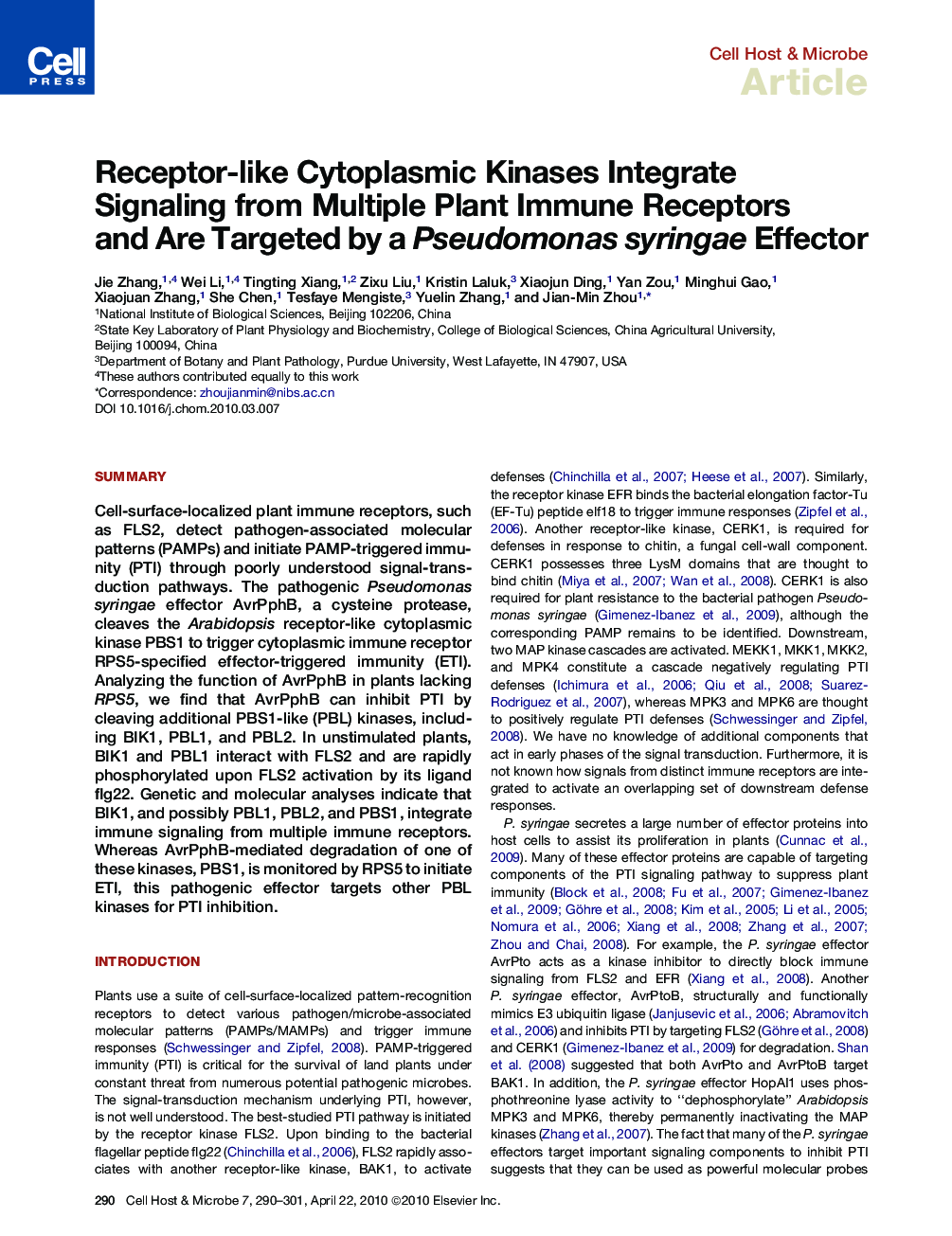| Article ID | Journal | Published Year | Pages | File Type |
|---|---|---|---|---|
| 4361565 | Cell Host & Microbe | 2010 | 12 Pages |
SummaryCell-surface-localized plant immune receptors, such as FLS2, detect pathogen-associated molecular patterns (PAMPs) and initiate PAMP-triggered immunity (PTI) through poorly understood signal-transduction pathways. The pathogenic Pseudomonas syringae effector AvrPphB, a cysteine protease, cleaves the Arabidopsis receptor-like cytoplasmic kinase PBS1 to trigger cytoplasmic immune receptor RPS5-specified effector-triggered immunity (ETI). Analyzing the function of AvrPphB in plants lacking RPS5, we find that AvrPphB can inhibit PTI by cleaving additional PBS1-like (PBL) kinases, including BIK1, PBL1, and PBL2. In unstimulated plants, BIK1 and PBL1 interact with FLS2 and are rapidly phosphorylated upon FLS2 activation by its ligand flg22. Genetic and molecular analyses indicate that BIK1, and possibly PBL1, PBL2, and PBS1, integrate immune signaling from multiple immune receptors. Whereas AvrPphB-mediated degradation of one of these kinases, PBS1, is monitored by RPS5 to initiate ETI, this pathogenic effector targets other PBL kinases for PTI inhibition.
► Pseudomonas syringae effector AvrPphB inhibits PAMP-triggered immunity (PTI) ► PBS1-like kinases required for PTI are AvrPphB protease substrates ► The PBS1-like kinase BIK1 interacts with the PTI receptor FLS2 ► PBS1-like kinases integrate signaling from multiple immune receptors
